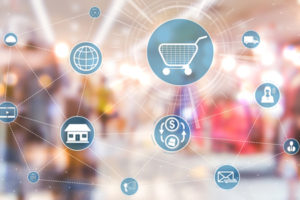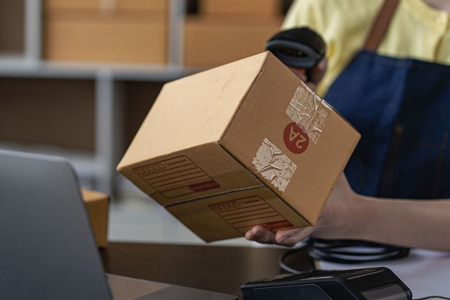Ask the Experts:
In-Store Fulfillment of Omnichannel Orders
In a recent episode of Parker Avery’s Talk Retail To Me podcast, Senior Director and omnichannel expert, Rob Oglesby shares his insights into how big box retailers are handling in-store fulfillment of omnichannel orders.
Answering questions from an interview with media outlet Modern Retail for a piece titled, “Big-box retailers continue to ramp up investments in store-based fulfillment,” Rob outlines the implications, challenges, and risks, as this capability becomes critical to many retailers’ success.
Listen to the Podcast
Read the Interview Transcript
How would you describe the basic idea behind using stores as fulfillment centers?
Rob: This is a pretty complex question because there’s a lot that goes into it. First and foremost, it’s a way to get closer to the customer. With stores around the corner from where customers live, being able to use the store as a fulfillment center significantly reduces the travel time to get from the location of the inventory to where the customer is, which also reduces costs. The other point about using stores as fulfillment centers is that this approach taps into inventory that might otherwise not be available.
By that, I mean inventory that could have gone obsolete would be in clearance, and you’ve got the last bit of it that’s still in inventory somewhere. By using a store as a fulfillment center, you’ve expanded the reach of who can get to that product beyond the person who is simply walking into the store. So if I’ve got something like the last item in the entire chain that is in one store and I present that online, my customer base is essentially universal. There’s a lot of power to that.
What is pushing this strategy to become really popular among big box stores right now?
Rob: First off, customers have shifted their shopping habits, especially coming out of COVID. More customers are buying online and using the web for either pick up or delivery as opposed to going into stores and shopping. As a result, big box retailers have started to realize that they need to offer that and must be able to leverage the proximity of the stores to where the customer is. Obviously, one thing you don’t want to do is ship from a store across the country, so that’s not what they’re after.
They are interested in getting close to the customer and being able to offer same-day or next-day delivery to the customer without costing a greater amount of money to do so. Because again, you can potentially use local delivery sources or your own fleet to do so.
What are some of the major benefits of in-store fulfillment of omnichannel orders?
Rob: Beyond what I’ve already outlined, it’s customer service. It’s being able to quickly fulfill a customer’s order without incurring significantly larger costs. Rather than using next-day air, for instance, to get something from a centralized distribution center, a retailer can use local delivery services (ground) which cost significantly less to get the same service level to the customer without inducing additional costs. So the consumer doesn’t necessarily pay extra for it.
The other piece is being able to tap into inventory that is in stores that wouldn’t necessarily still be in a distribution center. Having the ability to sell through more of the retailers’ inventory at a higher margin and full price is another key advantage to this.
You may also like
A lot of retailers have in-store omnichannel fulfillment applied to some extent, but it’s particularly popular among big box stores like Walmart and Ulta. Why is that?
Rob: The draw now is being able to leverage more of the inventory in the retailer’s total network. The idea is to be able to not just have distribution centers that are focused on direct-to-consumer, but to be able to leverage inventory that’s already in stores.
The way Walmart stores are structured in particular, or how other big box retailers are structured, is now they’ve turned to resources within the store that are pretty much dedicated to filling online orders, whether it’s buying online, pick-up in-store or it’s a ship-to. Both of those can be tightly integrated with each other to basically move the product from the sales floor or the back room, depending on where the product is, into an area where it could be quickly packaged and shipped out to the customer.
I haven’t seen it in the back rooms recently, but I have to believe that what’s happened is that they’ve taken a portion of their back rooms and continue to extend them to be shipping centers, which is part of what the challenges were early on. It gets into an operational design opportunity as well.
The draw now is being able to leverage more of the inventory in the total network…to not just have distribution centers that are focused on direct-to-consumer, but to be able to leverage inventory that’s already in stores.
With stores essentially having a dual identity as a store and also a fulfillment center, is that the same case with the employees as well? Are they becoming both warehouse workers and store associates?
Rob: Early on, it was like that. Especially if you go into stores today that are starting to do a lot more in-store omnichannel fulfillment, you see people whose full-time job is online fulfillment. It’s definitely been a role shift or a role definition.
Going back ten-plus years ago, when I was involved in the implementation of pick-up today at Walmart, it was somebody on duty doing the job on a daily basis. They were given a handheld that had an alerting system on it, they knew what the process was, and they would get an order that pinged them. They would go out and pick up the order, bring it back to the back room, stage it, and do all the steps so that the customer knew that they could come pick up their item.
Today, the process has grown significantly. The demand has grown substantially, and as a result, the retailers have had to focus more energy on labor in the stores to actually execute these activities.
How can retailers save money through in-store omnichannel fulfillment?
Rob: Therein lies part of the problem. Online fulfillment clearly costs more to the retailer, and there’s no question about it. Again, what you’ll notice is they are putting a lot of emphasis on optimizing what happens in the store. If you walk through some of these stores and you observe as a consumer, you will see they’ve got specialized carts. They’ve got a process to be able to pick multiple orders at once, and they’re getting moved through the store in a very organized fashion so that they’re able to fulfill multiple orders at a time. There are a lot of different ways to do this, but essentially, that is applying warehouse technology or DC-type technology to the store and providing the store associate with the ability to get the job done as efficiently as possible.
I think one of the biggest challenges that retailers continue to face, however, is if you’re doing for instance a promise of customer orders at 10 o’clock this morning with a pickup promise of 2 o’clock this afternoon, then you’ve got to get out to the store and pick the items as soon as possible. That can be disruptive to consumers who are physically shopping in the store. So that is a challenge that retailers are facing. I think that there are likely to be continued shifts, as this becomes more of a norm in certain stores where they might begin to take more of the product and put it in the back room so that you don’t have the disruption.
What are some of the risks or challenges of in-store omnichannel fulfillment?
Rob: I don’t think I’d call it a risk. I think it’s a challenge: how do you keep the consumer who’s shopping the store happy and not feeling stepped on?
I think the other big risk is that it costs a certain amount of money to get a product from the distribution center or through the supply chain all the way to a store. Then you have to turn around and grab that product that was originally intended for the in-store shopper and ship it out of the store. This is somewhat of a risk because you could potentially be going out of stock in an item that’s going to have to be replenished into that store anyway.
A lot of retailers are still struggling to find more effective ways of making sure that inventory is leveraged to the fullest extent.
I think those are some of the key things that need to be taken into account when deciding to send an order to a specific store that’s going to be shipped as opposed to going for pickup. If the item is going to be picked up at the curbside or inside the store, then the consumer pretty much made a choice on where that inventory had to be. Unless of course it’s going to be shipped to the store for pickup in three or four days or whatever it may be.
For the product that’s getting shipped out of the store, it’s a fine line to say “I don’t think I want to grab the last item that’s in that store or get down to a critical minimum in that specific store if I can ship it from a different store.” That gets into the way the order management system brokers orders, so it’s up higher in the chain as opposed to the operations in the store itself. They have to make really choice decisions around sourcing the product from the right store so that they keep that in-stock balance for the consumer that’s going to shop the store balanced with the need to fulfill and take care of the customer that bought online.
So in my mind, those are some of the key things that I think a lot of retailers are still struggling with and looking to find better ways and more effective ways of making sure that inventory is leveraged to the fullest extent.
How do you see in-store fulfillment of omnichannel orders impacting the retail industry? What are some of the after-effects?
Rob: The impact of the industry is that this is here to stay. In my mind, the biggest thing that these retailers, especially the ones that started in brick-and-mortar and have become very effective online is it’s a leverage point. If you’ve got a fleet of 4,000 stores or 15,000 stores or whatever it may be, you’ve already got a process to get inventory close to your customer and to be able to easily satisfy the customer’s desire to shop however they want to shop.
I don’t think there’s a choice. At this point, the train has left the station; I just don’t see this as stopping. And, frankly, the other piece is that some retailers have strategies for doing things like dark warehouses or turning a store that’s not performing very well into a distribution center. That’s all well and good, but at the same time, you’re now taking inventory and continuing to split it.
In my mind, this is allowing retailers to have the best of both worlds where they’re able to still satisfy a customer who’s walking into a store, that wants or needs something right now. Whether it’s a meal they’re preparing for later on this evening or a part that broke that they need a replacement or something to that effect that could have happened. The customer is looking for their way to shop and retailers have to respond to that.
If you have questions please contact us to discuss how Parker Avery can help your company develop or enhance your omnichannel fulfillment capabilities.




